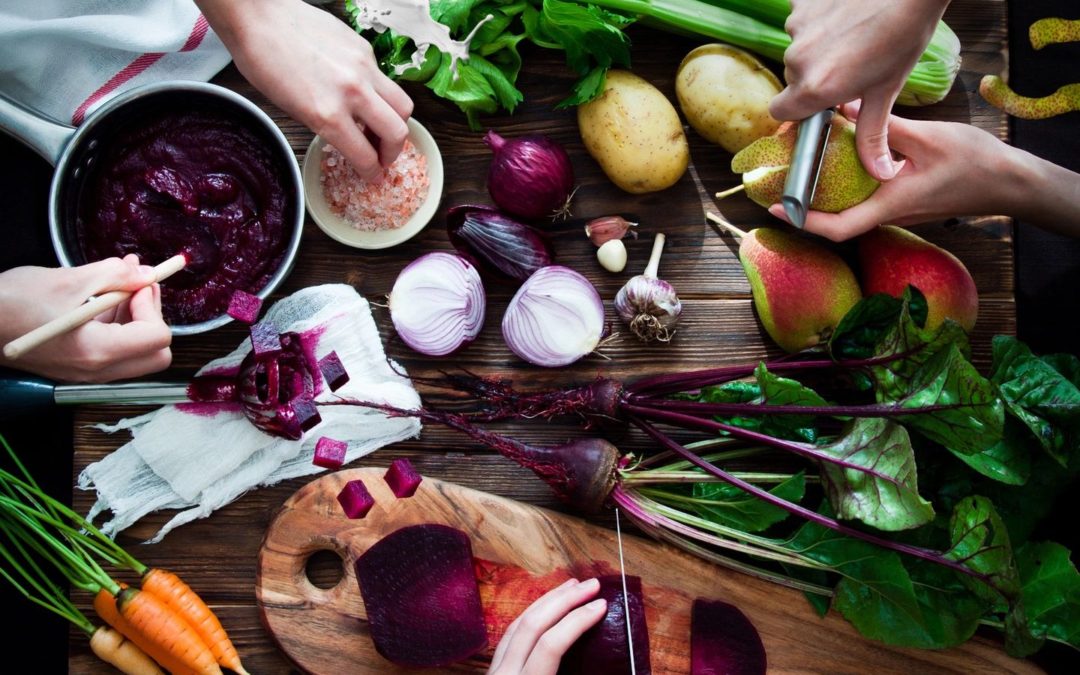From pumpkin spice lattes, muffins, to condiments, added sugar is hidden in most foods. Sweets are so readily available at work, gas stations, to social events, that it can lead to feeling like you have a sugar addiction. Sugar addiction is a physical, not just a mental issue of saying “no”. Our bodies have adapted to want sugary and high-fat foods as they would be rare in nature. The good news is there are holistic strategies to help reduce cravings, find healthier alternatives, and look at the deeper reasons why we might be craving sugar.
1. Balance Your Blood Sugar Levels
If your blood sugar levels are swinging from high to low all day, it can be common to crave sugar. When your blood sugar is low, you can have low energy levels along with carbohydrate or sugar cravings to get your blood sugar back up.
A few ways to prevent blood sugar peaks and valleys include:
- Avoid skipping meals. Your blood sugar will start dropping, which can lead to overeating or sugar cravings. A good tip is to start making food before you are hungry.
- Regularize when and how you eat. Try to eat at the same times daily and notice how you are eating. Eating at the same time every day will help your body balance its blood sugar levels. Noticing how you eat is also important to feeling full and present. Are you eating watching TV, driving, or eating on the go? If so, these can lead you to not feeling full, making you potentially eat more to feel satisfied.
- Eat your breakfast within one hour of waking up. Upon waking up your blood sugar levels are naturally low because you have been fasting all night. Eating within or around an hour of waking up helps to stabilize blood sugar and insulin levels.
- Include more protein and healthy fats(i.e. nuts, seeds, avocado, olive oil, etc.) into each meal to help stabilize your blood sugar and give you long-term fuel.
2. Find Healthier Upgrades
If your job or home has loads of sweets in it, make sure you have healthy sugar alternatives available. This can be a healthier treat like dates, fruit, nuts and seeds, dark chocolate, or no sugar added desserts.
3. Incorporate the Natural Sweet Taste More into Your Diet
In Ayurveda, the natural sweet taste and in particular sweet vegetables are a great way to natural satisfy your taste buds. Including more of the sweet taste like rice, grains, and sweet vegetables can make you feel more satisfied. Some sweet vegetables include:
- Carrots
- Sweet Potato
- Beets
- Butternut squash
4. Notice Your Emotions
There is a strong link between stress and emotions to eating high-fat, high-sugar foods. If you feel really stressed, sad, or are dealing with anxiety and you want sweets, you might struggle with emotional eating.
Start by bringing awareness to what emotions you might be experiencing or what you possibly don’t want to feel when you have cravings. Then, write a list of tools that can help you address the deeper root of your emotions.
For example:
- If you’re feeling bored: read an article, go on a walk, or draw something.
- If you’re feeling tired: do some restorative yoga or talk an Epson salt bath.
- If you’re feeling stressed: do some breathing exercises or a short meditation.
- If you’re feeling lonely or sad: call a friend or family member, write in your journal, or read a book.
Sugar can be a temporary relief to soothe overwhelming feelings. This isn’t inherently bad and as a coping mechanism is one of the safest, but it doesn’t help to fix the deeper problems. If you want to change your relationship with sugar and food in general, you have to go inwards and dig deep to support your emotions and what life is presenting you with.
5. Sleep
Sleep is a very important part of living a balanced, healthy life. A study done in 2016 showed that participants who got five hours of sleep or less a night showed a 21-percent increase in their consumption of sugary beverages. Another study showed that gherlin, the appetite-regulating hormone, increased when the participants got less sleep. Elevated gherlin is associated with a higher intake of carbohydrates and sweets.
If you have irregular sleeping habits, such as going to bed too late or watching TV too late, it can be helpful to think about changing some of these patterns. Experiment with getting more sleep for a few weeks and notice if that reduces cravings.
6. Identify Possible Other Causes
If you have tried the steps above and haven’t noticed a reduction in your sugar cravings, there might be other things contributing to your sugar cravings. One common gut imbalance that contributes to sugar cravings is a yeast overgrowth of Candida Albicans. This is just one example of a possible underlining cause. Consult your doctor or an alternative medial practitioner to learn more.
The best ways to address sugar cravings are through food, sleep, and becoming aware of what you feel. These small changes can be a big step in boosting your overall health!
